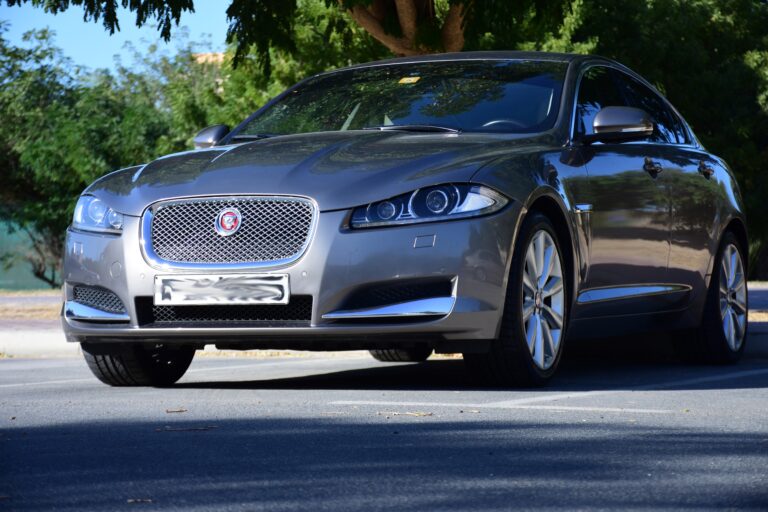Top Car Radio Brands: Elevate Your Driving Experience
Top Car Radio Brands: Elevate Your Driving Experience cars.truckstrend.com
In an era dominated by digital connectivity and high-fidelity audio, the car radio has evolved far beyond its humble beginnings as a simple AM/FM tuner. Today, it stands as the central hub of a vehicle’s infotainment system, offering everything from crystal-clear sound and seamless smartphone integration to advanced navigation and crucial safety features. For many drivers, the factory-installed head unit simply doesn’t cut it, lacking the features, power, or sound quality desired for an optimal in-car experience. This is where the top car radio brands come into play, offering a vast array of aftermarket solutions designed to transform your commute, road trip, or daily drive into an auditory and interactive delight.
Choosing the right car radio brand is more than just selecting a device; it’s an investment in your daily comfort, entertainment, and even safety. This comprehensive guide will delve into the world of top car radio brands, exploring what makes them stand out, the key features to look for, and how to navigate the options to find the perfect fit for your vehicle and lifestyle.
Top Car Radio Brands: Elevate Your Driving Experience
The Evolution of In-Car Entertainment: From Analog to Digital Dominance
The journey of the car radio is a fascinating testament to technological progress. From the bulky, vacuum-tube-powered units of the 1930s, offering only limited AM reception, we transitioned to FM radio in the 1950s, followed by cassette players in the 70s and CD players in the 80s and 90s. The 21st century ushered in the digital age, with MP3 compatibility, USB inputs, and Bluetooth connectivity becoming standard.
Today, car radios are sophisticated infotainment systems, often featuring large touchscreens, mirroring capabilities for smartphones (Apple CarPlay and Android Auto), advanced digital signal processing (DSP), and integration with vehicle diagnostics. This evolution highlights a crucial point: a modern car radio is no longer just for listening to music; it’s a command center for communication, navigation, and entertainment, making the choice of brand more critical than ever.
Why Choose a Top Car Radio Brand?
Opting for a reputable, top-tier car radio brand offers several compelling advantages over lesser-known or generic alternatives:
- Superior Sound Quality: Leading brands invest heavily in audio engineering, utilizing high-quality internal components, advanced Digital-to-Analog Converters (DACs), and sophisticated sound processing features (EQ, time alignment, crossovers) to deliver a richer, clearer, and more dynamic sound experience.
- Reliability and Durability: Established brands have a reputation to uphold. Their products undergo rigorous testing, ensuring long-term reliability and resistance to the harsh automotive environment (temperature fluctuations, vibrations).
- Feature Richness and Innovation: Top brands are at the forefront of innovation, consistently introducing new features like wireless Apple CarPlay/Android Auto, high-resolution audio support, advanced touchscreens, and seamless integration with a wider range of vehicle systems.
- User Experience: Intuitive interfaces, responsive touchscreens, and well-designed menus make the radios from top brands easier and safer to use while driving.
- Compatibility and Integration: These brands often offer broader compatibility with various car models, steering wheel controls, and integrate better with aftermarket amplifiers and other audio components.
- Customer Support and Warranty: Reputable brands typically provide better customer service, comprehensive warranties, and readily available firmware updates.
- Resale Value: A high-quality aftermarket head unit from a recognized brand can even add value to your vehicle upon resale.


Key Features to Look for in a Modern Car Radio
Before diving into specific brands, understanding the essential features will help you narrow down your choices:

Connectivity:
- Bluetooth: Essential for hands-free calling and wireless audio streaming. Look for versions with aptX for higher quality.
- USB Ports: For connecting USB drives, charging devices, and often for Apple CarPlay/Android Auto.
- AUX Input: Simple 3.5mm jack for connecting any audio source.
- Apple CarPlay & Android Auto: The most sought-after features, mirroring your smartphone’s interface for navigation, music, and communication directly on the radio’s screen. Look for wireless versions for ultimate convenience.
- HDMI/MHL: For connecting external video sources (less common now with CarPlay/Android Auto).
-
Sound Quality & Processing:
- High-Resolution Audio Support: For audiophiles, look for units that can play FLAC, WAV, and DSD files.
- Equalizer (EQ): At least 13-band graphic EQ is good; parametric EQs offer more precise control.
- Digital Signal Processing (DSP): Allows for advanced sound tuning, including time alignment (to ensure sound reaches your ears at the same time from all speakers) and crossover settings.
- Pre-amp Outputs (Pre-outs): High-voltage (4V or 5V) pre-outs are crucial for connecting aftermarket amplifiers without introducing noise. Look for at least 3 pairs (front, rear, subwoofer).
-
Display Type & Size:
- Single DIN vs. Double DIN: Single DIN units are smaller (7×2 inches) and often have flip-out screens. Double DIN units are larger (7×4 inches) and fit into wider dash openings, typically housing larger touchscreens.
- Touchscreen: Capacitive touchscreens offer smartphone-like responsiveness. Look for good resolution (e.g., WVGA, HD) and brightness.
- Screen Size: Common sizes range from 6.2 inches to 10.1 inches. Consider visibility and dash fit.
-
Navigation:
- Built-in GPS: Some units come with pre-loaded maps, useful if you’re in areas with no cell signal.
- Smartphone Integration: Relying on Apple CarPlay/Android Auto for Google Maps, Waze, etc., is often more up-to-date and convenient.
-
Safety & Convenience Features:
- Backup Camera Input: Essential for safety and parking ease.
- Steering Wheel Control Compatibility: Allows you to retain factory steering wheel controls (requires an adapter).
- iDatalink Maestro Compatibility: For seamless integration with vehicle features like climate control, parking sensors, and even engine diagnostics display.
- Remote Control: For passenger convenience.
-
Tuner Options:
- HD Radio: Digital broadcast for clearer FM/AM signals and additional sub-channels.
- Satellite Radio Ready (SiriusXM): Requires a separate tuner module and subscription.
Spotlight on Top Car Radio Brands
Here are the leading brands that consistently deliver quality, innovation, and performance in the car audio market:
1. Pioneer
Pioneer has long been a titan in the car audio industry, renowned for its innovative technology, robust features, and excellent sound quality. They offer a vast product line, from basic single-DIN receivers to advanced multimedia navigation units.
- Strengths: Exceptional sound processing (with features like their "Mixtrax" for DJ-like transitions), user-friendly interfaces, extensive feature sets (including both wired and wireless CarPlay/Android Auto across many models), and a reputation for reliability. Their NEX series is particularly popular for its premium features and performance.
- Target User: Anyone from budget-conscious upgraders to serious audiophiles looking for a feature-packed head unit with great sound.
2. Kenwood
Kenwood is another powerhouse, often praised for its build quality, sophisticated audio tuning capabilities, and seamless integration with external devices. They are particularly strong in multimedia receivers and navigation units.
- Strengths: Excellent audio components and DSP features, often integrating high-quality DACs. Many of their units come with built-in Garmin navigation, offering a reliable alternative to smartphone mapping. They also have a strong focus on advanced connectivity and robust build.
- Target User: Those who prioritize robust sound quality, reliable navigation, and durable construction, often willing to invest a bit more for premium features.
3. Sony
Sony brings its vast consumer electronics expertise to the car audio market, offering sleek designs, intuitive interfaces, and solid performance. Their emphasis is often on seamless smartphone integration and user experience.
- Strengths: Clean, minimalist designs, very responsive touchscreens, and excellent integration with Apple CarPlay and Android Auto. Their "ES" (Elevated Standard) series caters to audiophiles, while their general lineup provides great value and reliable performance.
- Target User: Drivers looking for a user-friendly interface, stylish design, and reliable smartphone connectivity without an overly complicated feature set.
4. Alpine
Alpine is often considered a premium brand, particularly favored by audiophiles and those seeking large, high-resolution displays. They are known for their commitment to sound quality and innovative, vehicle-specific solutions.
- Strengths: Top-tier sound quality with advanced audio tuning capabilities, often featuring larger-than-average touchscreens (up to 11 inches) that float above the dash. Their "Restyle" solutions offer custom-fit head units for specific vehicles, seamlessly integrating with factory controls and aesthetics.
- Target User: Audiophiles, enthusiasts, and those who want the largest possible screen and most advanced integration for their specific vehicle, often with a higher budget.
5. JVC
JVC, often sharing technology with Kenwood (as part of the JVCKENWOOD group), offers a range of car radios that provide excellent value for money. They strike a good balance between features, performance, and affordability.
- Strengths: Solid performance with good sound quality for the price point, reliable connectivity, and a good selection of single and double-DIN units. They often offer many of the essential features found in higher-priced units at a more accessible cost.
- Target User: Budget-conscious buyers who still want reliable performance, good features (like CarPlay/Android Auto), and a reputable brand without breaking the bank.
Choosing the Right Car Radio for You
Beyond brand preference, consider these practical steps:
- Determine Your Budget: Car radios range from under $100 to over $1000. Set a realistic budget based on desired features.
- Check Vehicle Compatibility:
- Dash Opening: Is your car single DIN or double DIN? This is the primary physical constraint.
- Dash Kit: You’ll likely need a dash kit to seamlessly integrate the new radio into your car’s dashboard.
- Wiring Harness: An adapter that connects the new radio’s wiring to your car’s factory wiring without cutting wires.
- Steering Wheel Control Interface: If you want to retain your steering wheel controls, you’ll need an adapter (e.g., Metra Axxess, PAC Audio).
- Antenna Adapter: Often required for proper radio reception.
- Identify Must-Have Features: Do you absolutely need Apple CarPlay/Android Auto? Built-in navigation? High-res audio? Prioritize.
- Consider Installation:
- DIY: Possible for those with basic electrical knowledge and patience, but requires the right tools and adapters. Many online resources and videos can guide you.
- Professional Installation: Recommended for complex installations (e.g., integrating with factory amps, advanced DSP setups, or vehicles with complex wiring) or if you’re uncomfortable with electrical work. It ensures proper functionality and avoids potential damage.
Table of Representative Price Ranges for Top Car Radio Brands
Please note that these are typical representative price ranges for common types of units (basic, mid-range multimedia, premium multimedia/navigation). Actual prices vary significantly based on specific models, features, sales, and retailers.
| Brand | Typical Price Range (USD) | Key Strengths | Target User / Best For |
|---|---|---|---|
| Pioneer | $150 – $1200+ | Excellent sound processing, wide feature set, reliable, user-friendly. | All users; from basic upgrades to premium infotainment. |
| Kenwood | $180 – $1500+ | Robust build quality, high-fidelity audio, often includes Garmin navigation. | Audiophiles, those needing reliable built-in navigation. |
| Sony | $150 – $900+ | Sleek design, intuitive interface, seamless smartphone integration, good value. | Users prioritizing ease of use, clean aesthetics, smartphone mirroring. |
| Alpine | $300 – $2000+ | Premium sound quality, large high-res displays, vehicle-specific "Restyle" solutions. | Audiophiles, enthusiasts, those wanting large screens & advanced integration. |
| JVC | $120 – $700+ | Great value, solid performance, essential features, reliable entry-level to mid-range options. | Budget-conscious buyers, first-time upgraders. |
Frequently Asked Questions (FAQ)
Q1: What’s the difference between a single DIN and a double DIN car radio?
A1: Single DIN refers to a standard head unit opening size of 2 inches (height) by 7 inches (width). Double DIN is twice the height, measuring 4 inches (height) by 7 inches (width). Most modern multimedia units with large touchscreens are double DIN, though some single DIN units have flip-out screens.
Q2: Do I need a wiring harness and a dash kit?
A2: Almost certainly. A wiring harness adapter connects your new radio to your car’s factory wiring without cutting or splicing, making installation much cleaner and reversible. A dash kit ensures the new radio fits snugly and aesthetically into your car’s dashboard opening.
Q3: What are Apple CarPlay and Android Auto?
A3: They are smartphone integration platforms that mirror a simplified version of your phone’s interface onto the car radio’s screen. This allows you to safely use navigation apps (Google Maps, Waze), music streaming services (Spotify, Apple Music), make calls, and send messages via voice commands or the touchscreen.
Q4: Can I install a new car radio myself?
A4: Yes, if you have basic tools, some patience, and are comfortable with following instructions (often found online for your specific vehicle). However, if you’re unsure about wiring or dealing with complex vehicle electronics, professional installation is recommended to avoid damage.
Q5: Will a new car radio improve my sound quality, even with factory speakers?
A5: Yes, usually. Aftermarket radios typically have more powerful internal amplifiers, better Digital-to-Analog Converters (DACs), and more advanced sound processing features (EQ, time alignment) than factory units. This can significantly improve the clarity, depth, and overall quality of your audio, even with stock speakers. For the best results, upgrading speakers and adding an amplifier is often the next step.
Q6: What are "pre-outs" and why are they important?
A6: Pre-outs (pre-amplifier outputs) are low-level audio outputs designed to connect your head unit to external amplifiers. They deliver a clean, unamplified signal, which is ideal for external amps to process and amplify. Higher voltage pre-outs (e.g., 4V or 5V) are generally preferred as they provide a stronger, cleaner signal to the amplifier, reducing the chance of noise.
Conclusion
Upgrading your car radio is one of the most impactful improvements you can make to your vehicle, transforming your daily commute into a more enjoyable and connected experience. By understanding the key features, recognizing the strengths of the top car radio brands like Pioneer, Kenwood, Sony, Alpine, and JVC, and considering your specific needs and vehicle compatibility, you can confidently choose a head unit that elevates your driving journey. Whether you’re an audiophile seeking pristine sound, a tech-lover craving seamless smartphone integration, or simply looking for a reliable upgrade, the right car radio from a reputable brand awaits to revolutionize your time on the road.






